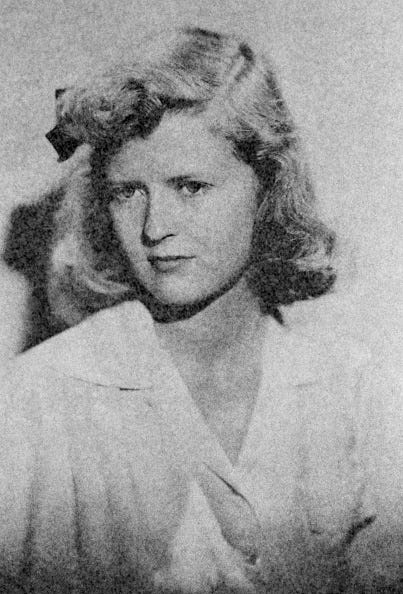“Directions to Your College Dorm” by Faith Shearin from Orpheus, Turning. © The Broadkill River Press, 2015.
ORIGINAL TEXT AND AUDIO - 2017
It's the birthday of French novelist Alexandre Dumas, born in Villers-Cotterêts, France (1802). He wrote swashbuckling adventure novels like The Three Musketeers (1844) and The Count of Monte Cristo (1844). He started writing fiction at a time when publishers used fiction to sell newspapers. When his first novel appeared in a newspaper, it generated 5,000 new subscriptions. Dumas didn't care much about characterization or historical accuracy or even plausibility; he just wanted to tell an exciting story. Whenever he made money, he spent it lavishly and then some, the result being that he was often feverishly writing a new book to keep ahead of his creditors.
It's the birthday of English poet and novelist Robert Graves, born in Wimbledon in 1895. He wrote more than 120 books, including historical fiction like I, Claudius (1934), about the Roman Empire; and The Golden Fleece (1944), about Hercules. His research of mythology for The Golden Fleece led him to write a controversial book, The White Goddess; A Historical Grammar of Poetic Myth (1948). In it, he argues for throwing off the old patriarchal gods and relying on a divine female deity for inspiration. He believed the White Goddess inspired poetry that was magical, rather than the rational, classical verse that arose from meditating on a male god.
He wrote in his essay "A Case for Xanthippe" (1960): "Though philosophers like to define poetry as irrational fancy, for us it is a practical, humorous, reasonable way of being ourselves. Of never acquiescing in a fraud; of never accepting the secondary-rate in poetry, painting, music, love, friends. Of safeguarding our poetic institutions against the encroachments of mechanized, insensate, inhumane, abstract rationality."
It's the birthday of the famous aviator Amelia Earhart, born in Atchison, Kansas (1897). She was a tomboy. Her parents let her wear pants when she was growing up, even though it was not acceptable yet for women to do so. She spent her childhood hiking, fishing, and exploring caves. She built a small wooden roller coaster in her backyard and practiced riding on it without falling off.
She had been studying medicine when she went to her first air show in California, and it was then that she decided to become a pilot. She was the first person to fly from California to Hawaii, and she tried to fly around the circumference of the globe. She was photogenic and well-spoken, so the aviation industry used her as a symbol to improve its image and to reassure women that flying was safe. Unfortunately, on her second attempt to fly around the globe she disappeared in the central Pacific, somewhere near the international dateline.
It's the birthday of Zelda Fitzgerald, born Zelda Sayre in Montgomery, Alabama (1900). She met F. Scott Fitzgerald at one of the military dances when he was stationed in Montgomery. He stood out from the crowd, wearing his Brooks Brothers uniform and his cream-colored boots. Zelda said, "He smelled like new goods." He told her that she looked like the heroine in the novel he was writing.
They went on their first date on this day, her birthday, in 1918. Years later, in a letter to Scott, she wrote: "The night you gave me my birthday party ... you were a young Lieutenant and I was a fragrant phantom, wasn't I? And it was a radiant night, a night of soft conspiracy and the trees agreed that it was all going to be for the best."
It was on this day in 1847 that the Mormon leader Brigham Young led his people into the Valley of the Great Salt Lake. He was leading a group of Mormons from Illinois to find a new settlement in the West where they might not be bothered. Brigham Young had gotten sick during the journey and was being carried prostrate in a wagon. But when they reached the edge of the Valley of the Great Salt Lake, the wagon stopped as it came to a natural lookout point. According to legend, Brigham Young was able to describe the scene below without looking. Then he sat up and looked out at the valley and said, "This is the right place. Drive on."





That is not a photograph of Zelda Fitzgerald, rather it is her daughter Frances “Scotty” Fitzgerald.
Zelda was Fitz' wife for many years and became a schizophrenic later in life. F was devoted to her always.
FSF was a natural a born writer who drank his way out of Princeton, but, was actually better than Hemingway.
In Minneapolis, there is a theater named after him.
TWA writers omit so much.